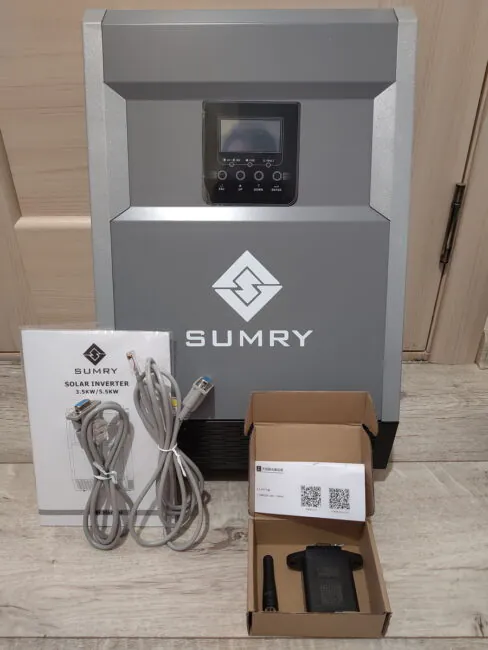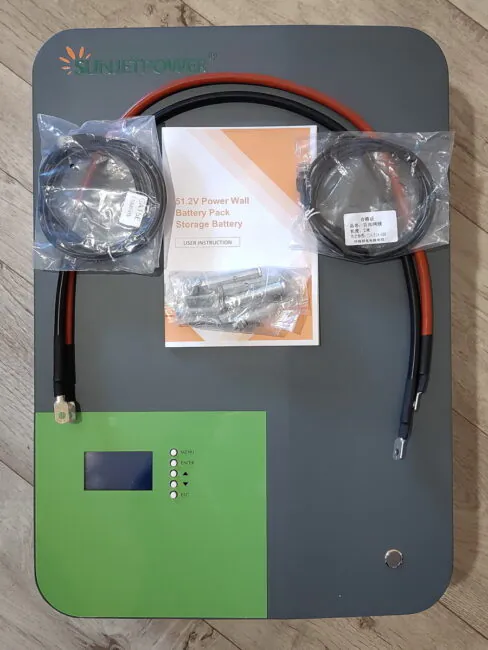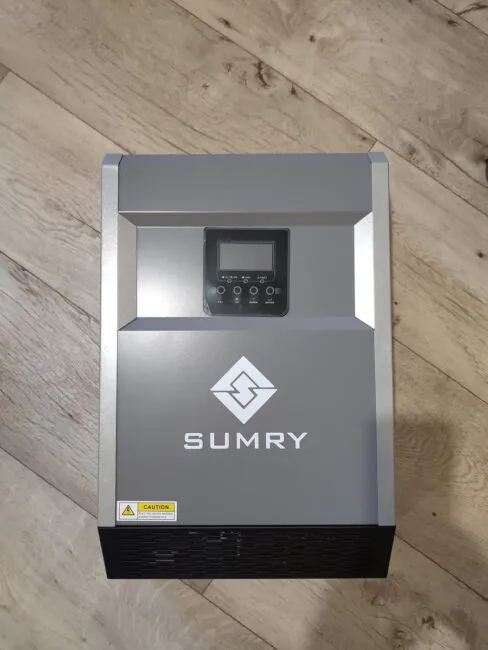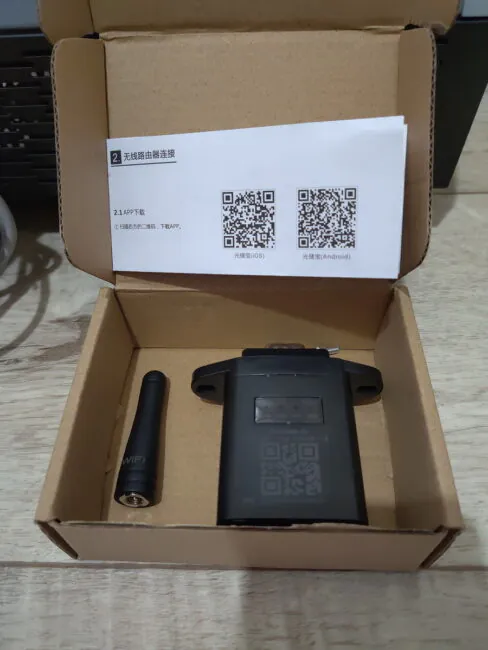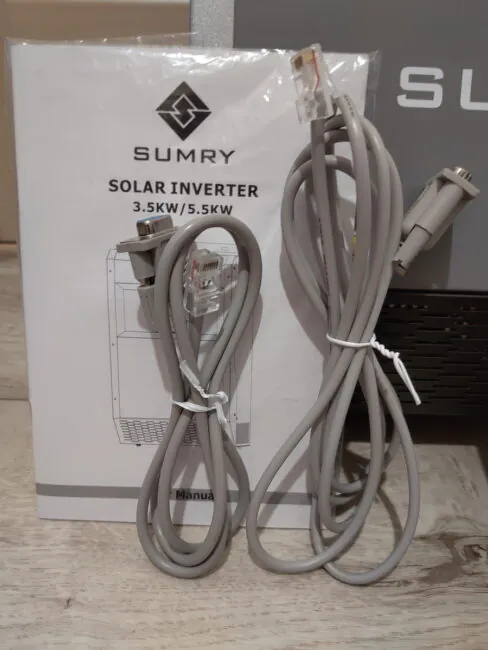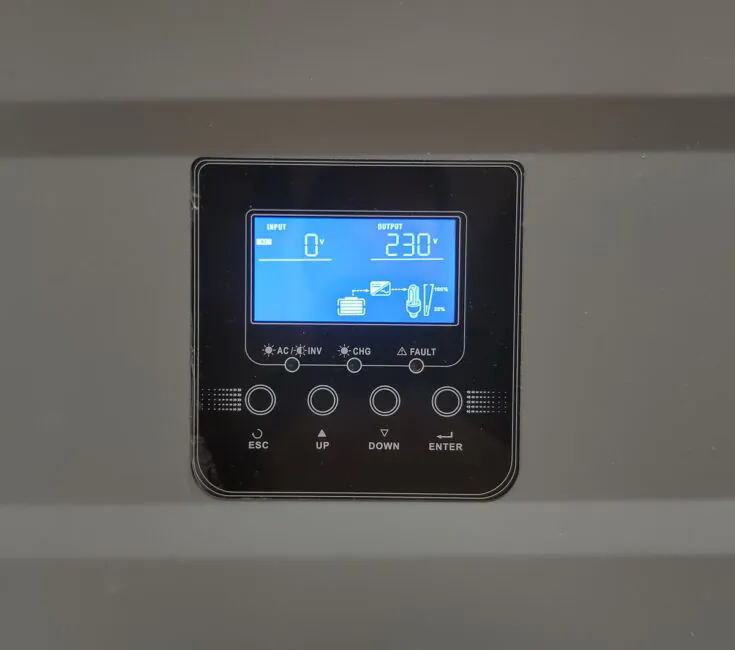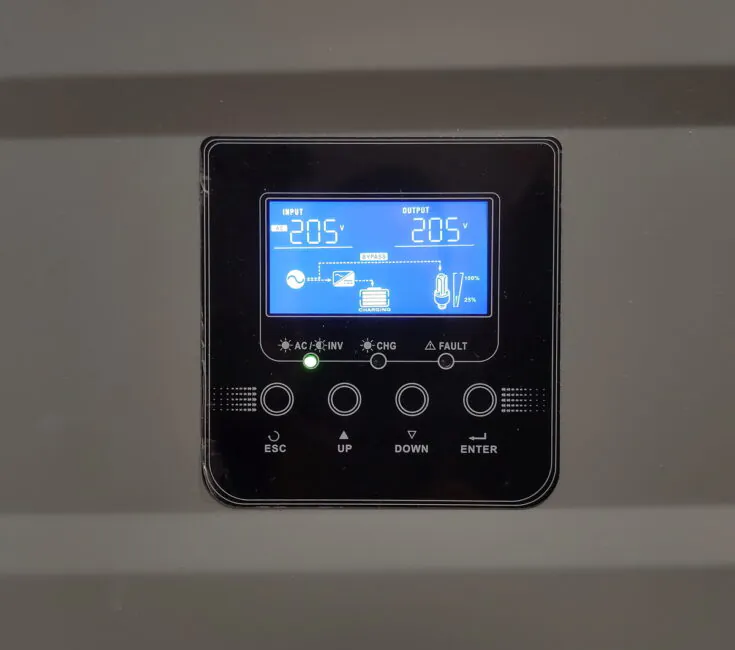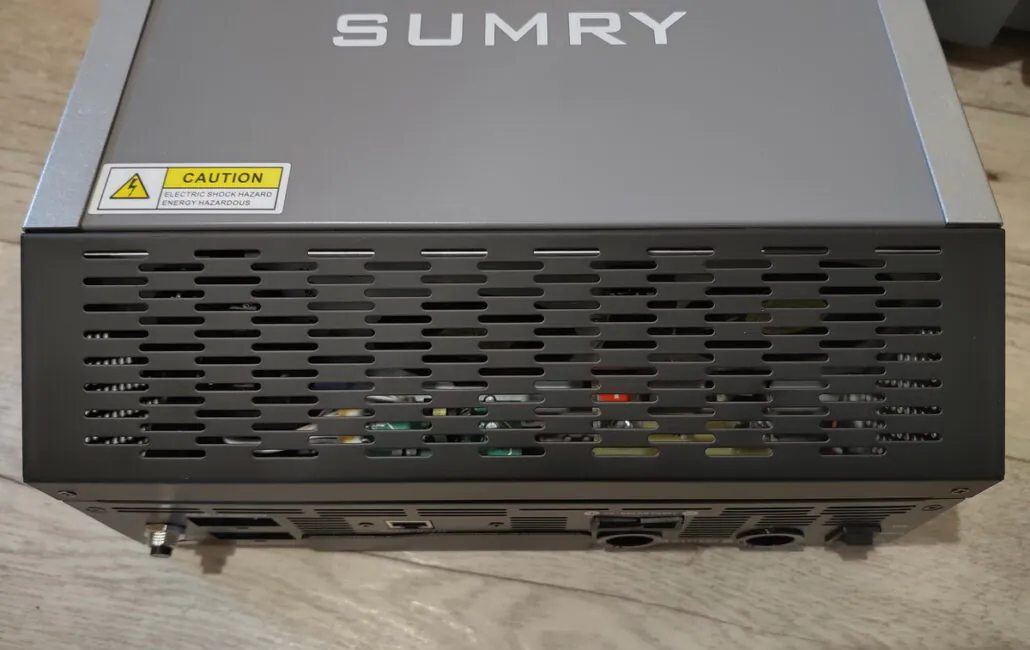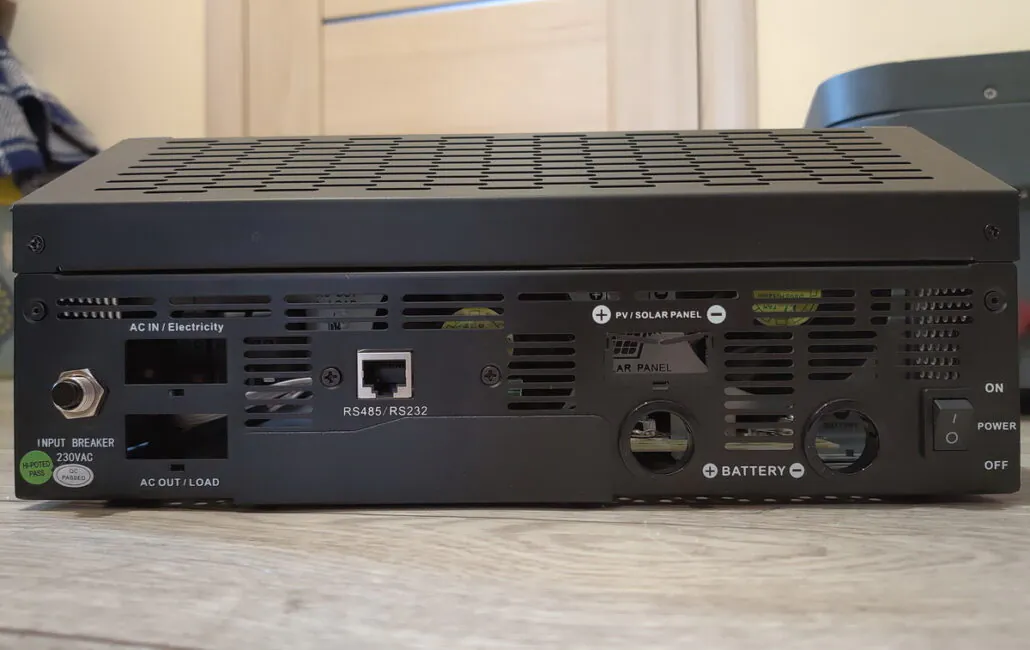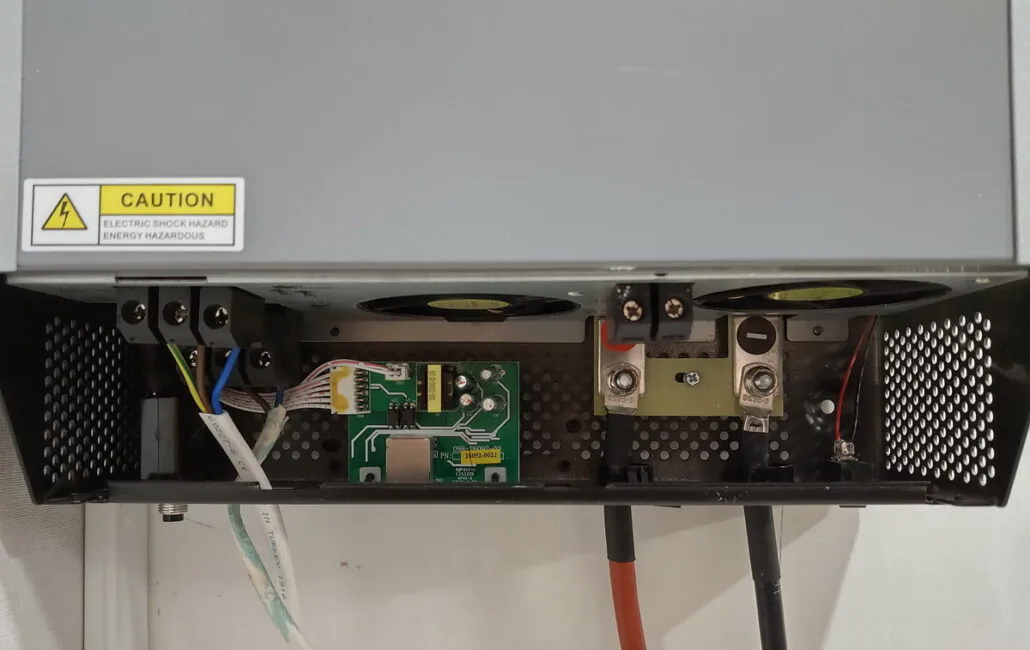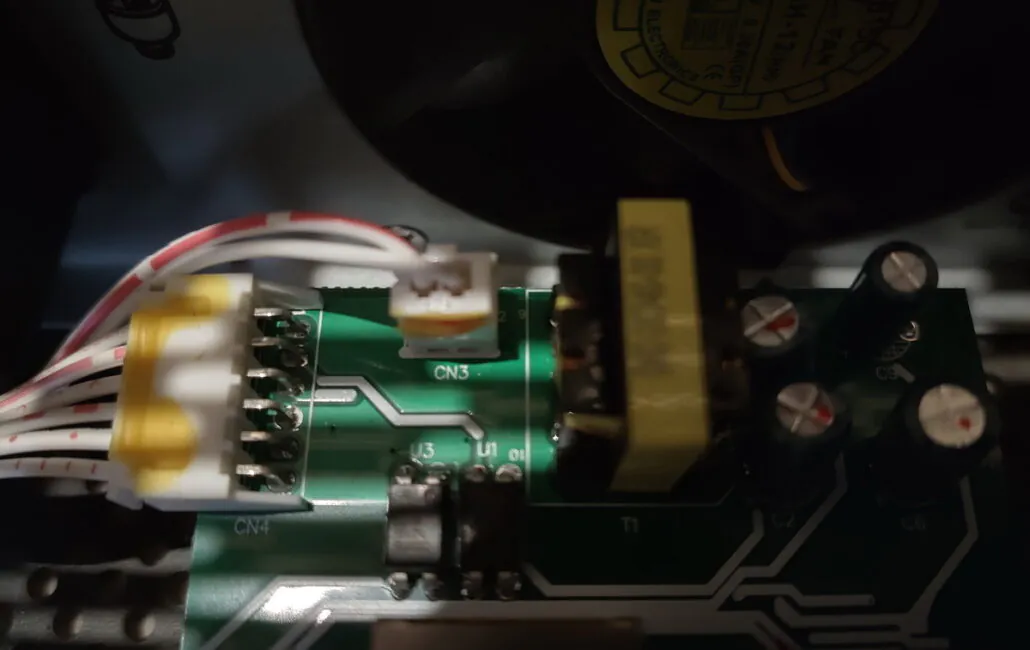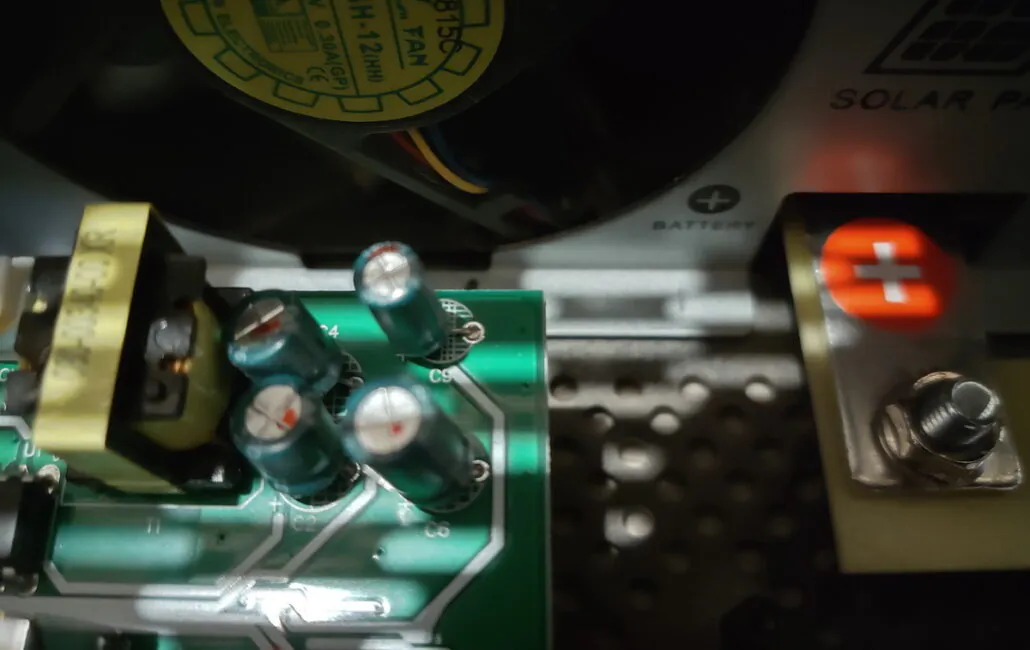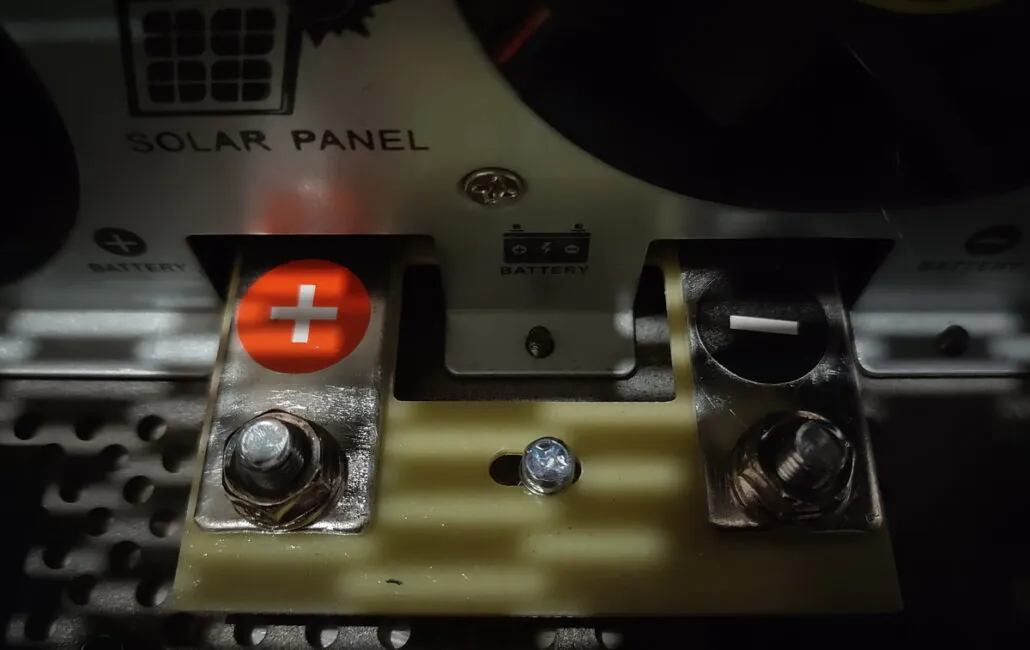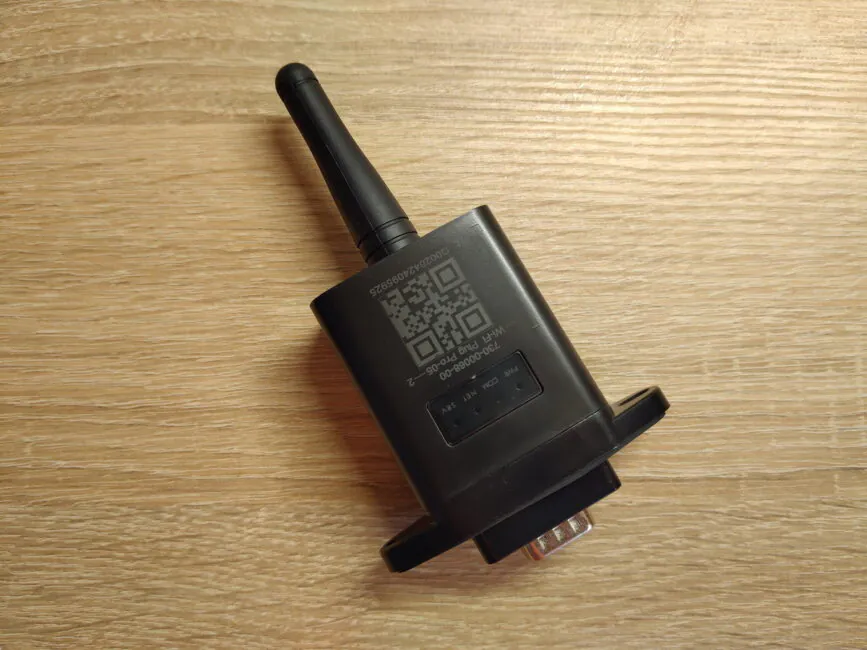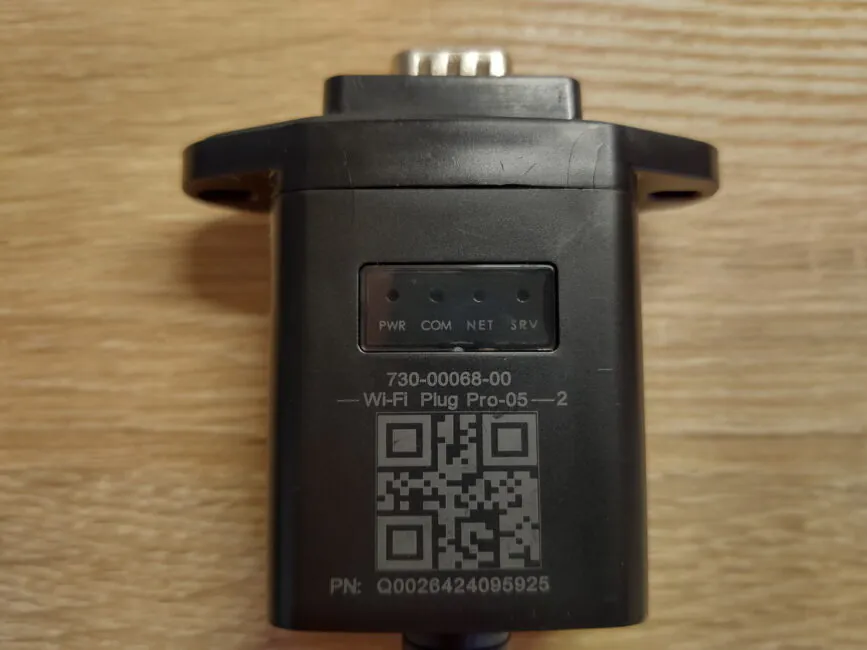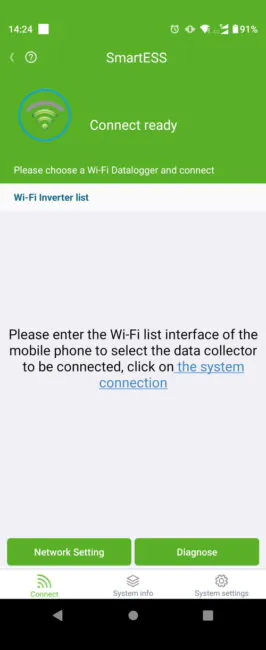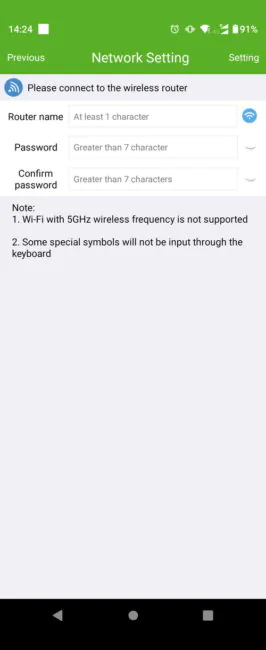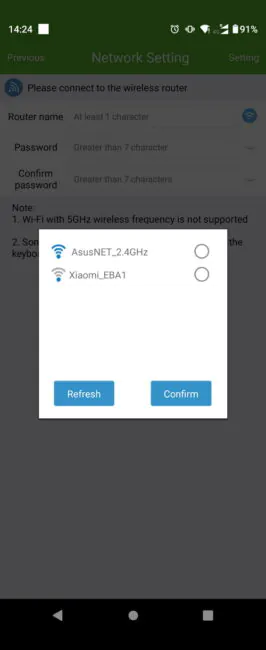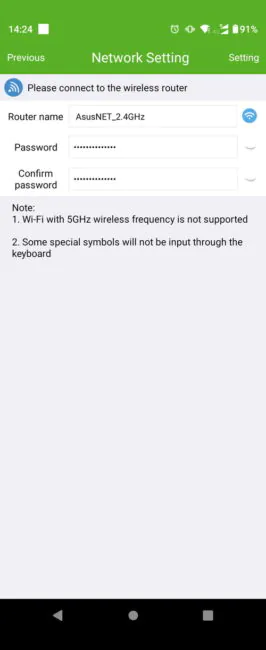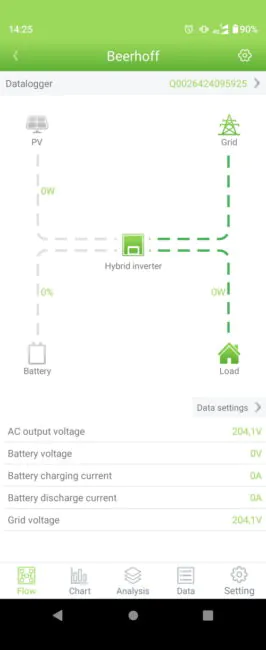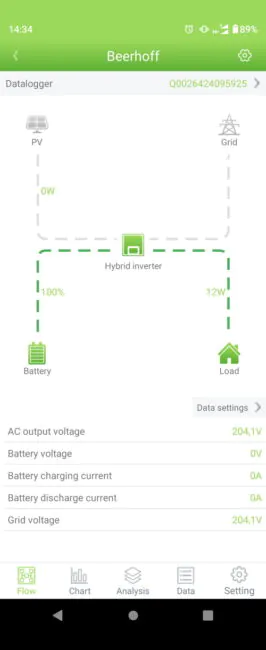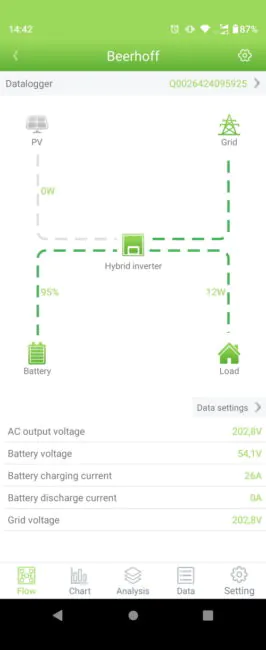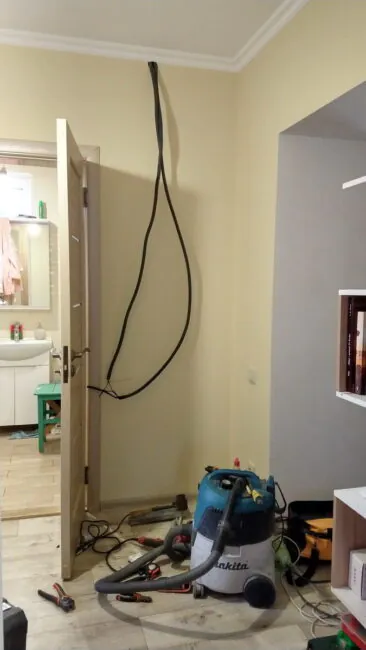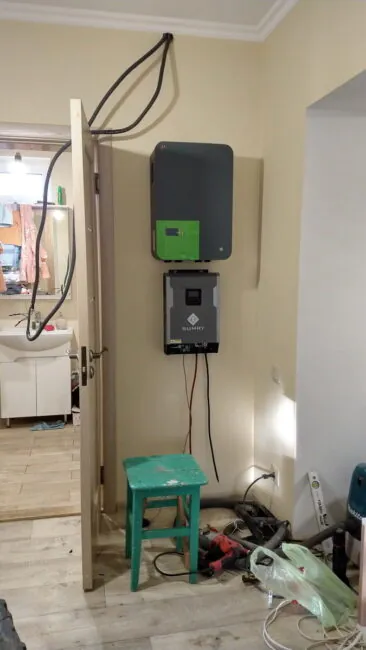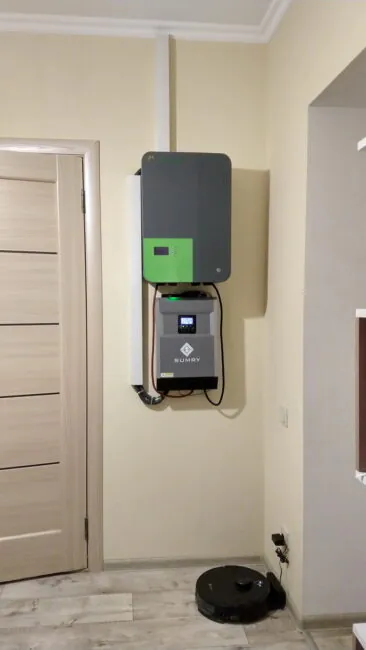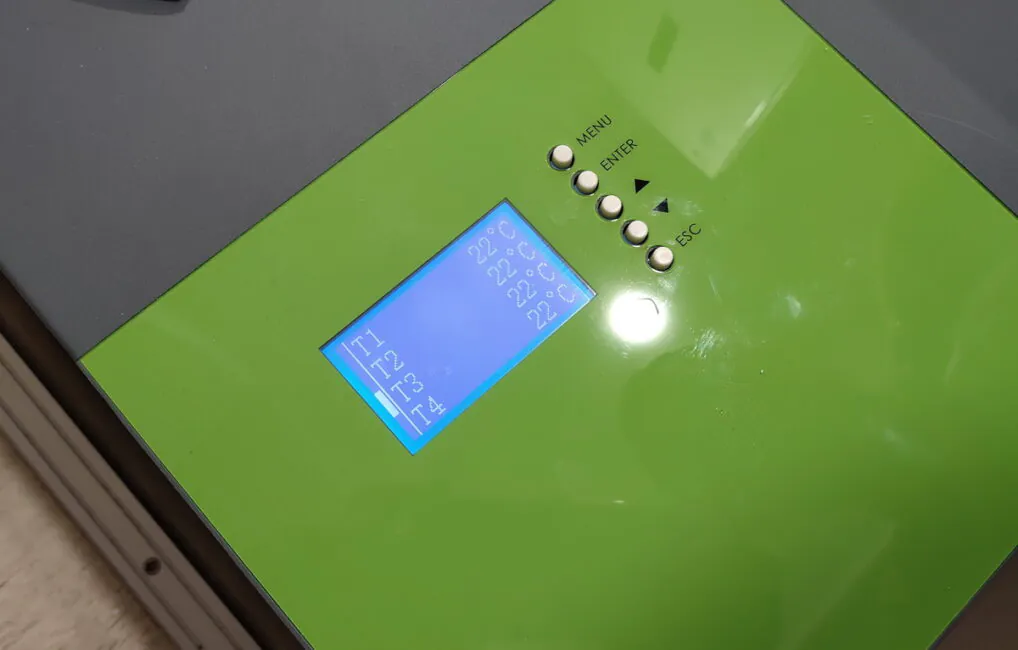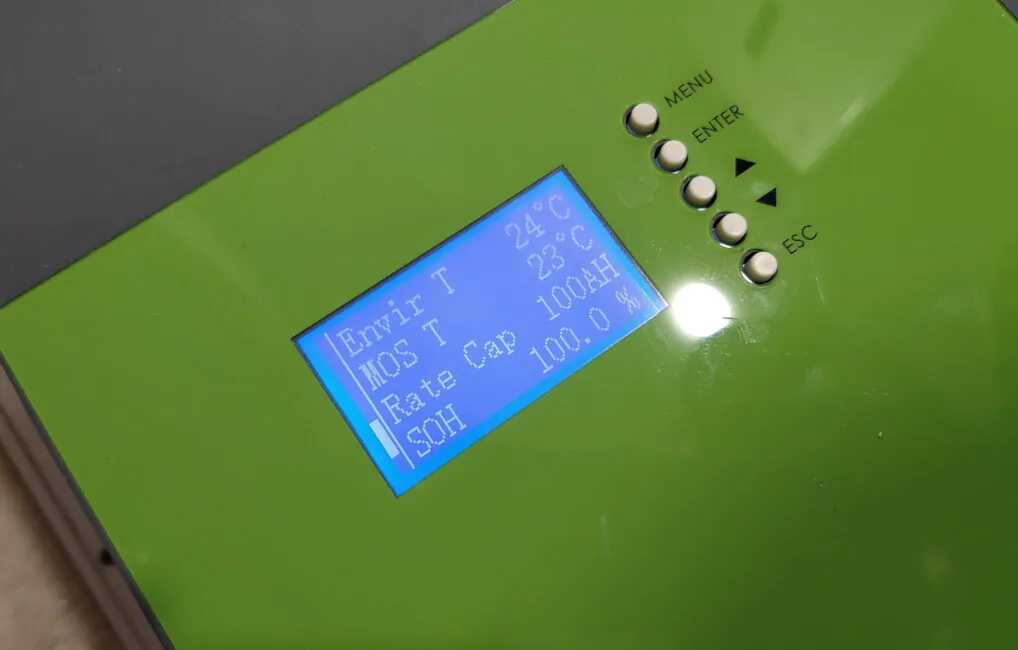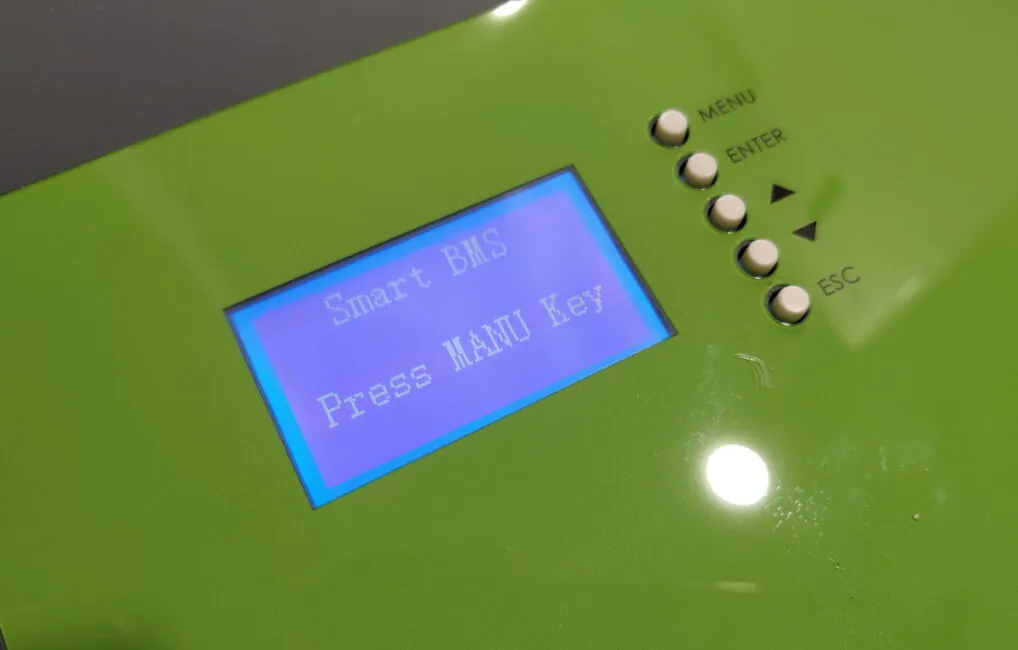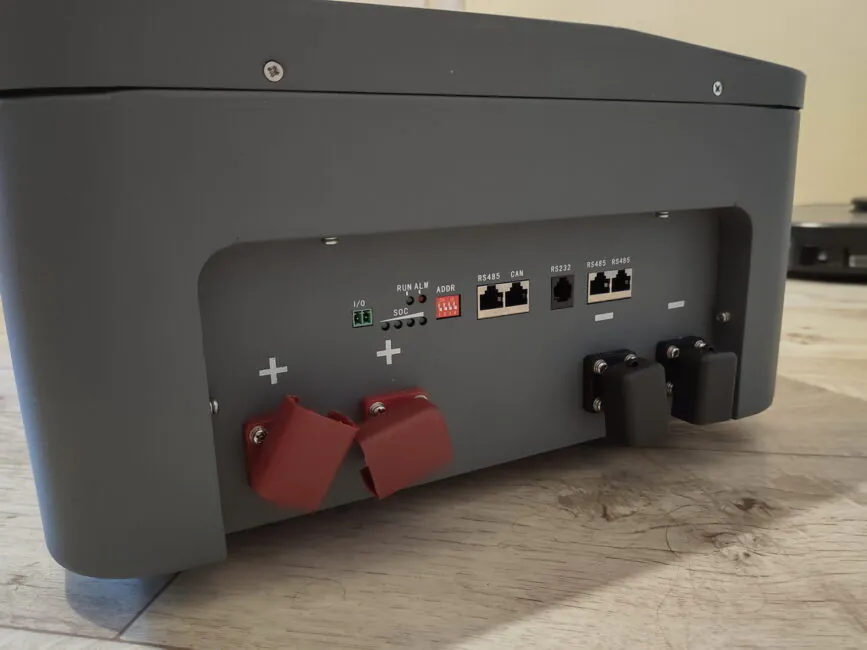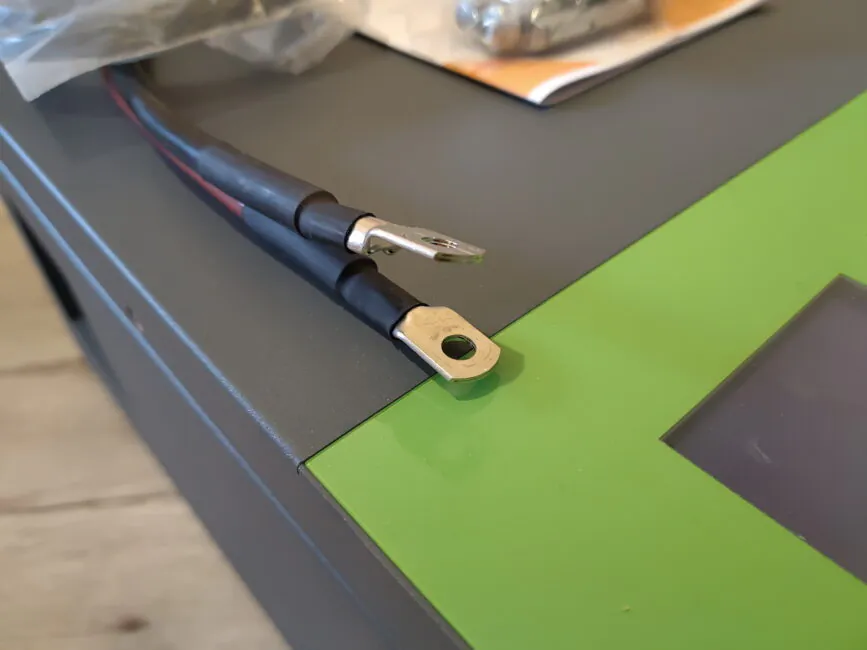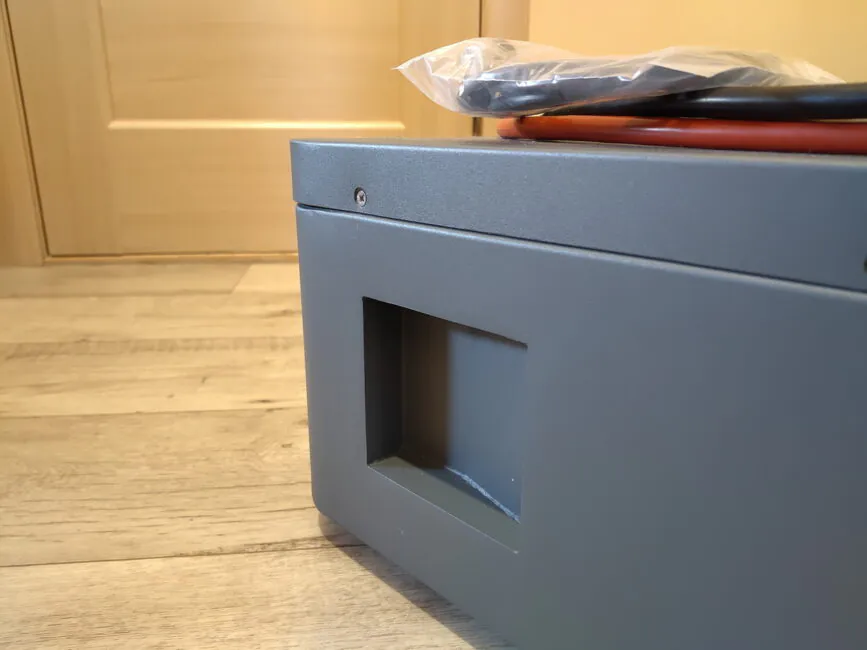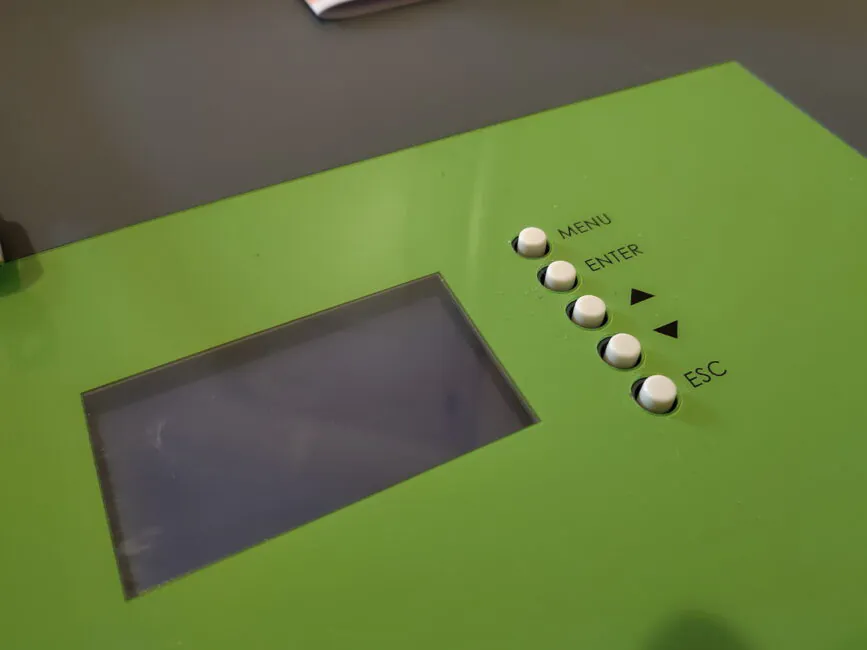© ROOT-NATION.com - Use of content is permitted with a backlink.
Today, we will discuss a pair – the off grid solar inverter Sumry HGS 5500W and the battery Sunjetpower 100AH 51V, and I will explain why it is necessary, how to install and set up everything.
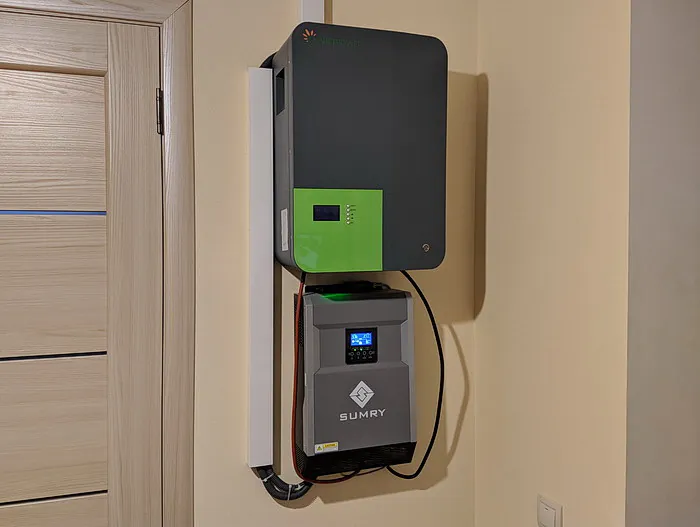
Instead of an introduction
For almost two years, our country has been living under the conditions of Russian aggression, where every new day sees the loss of Ukrainian citizens, both military and civilians. Additionally, last year, before the onset of the cold weather, invaders began targeting our energy system, planning to destabilize the situation in the rear. Considering all this, they hoped for widespread protests from the population.
In these challenging circumstances, the issue of housing autonomy has become particularly acute. The fundamental autonomy of a house or apartment is primarily determined by the availability of electricity, providing the ability to maintain communication (charge gadgets), warmth in the house (if there is, of course, an autonomous gas boiler), and, naturally, light. Overall, we have become quite dependent on the correct sine wave in the outlets of our homes.
To address this issue, there is a device called an inverter. It converts direct current into alternating current, which powers most of our devices. The inverter receives direct current from rechargeable batteries, which need to be purchased separately. Rechargeable batteries come in various types, with the most common being lead-acid, nickel-cadmium, nickel-metal hydride, nickel-zinc, lithium-ion, and lithium-polymer batteries.
Read also: KIVI 32F750NB review: Choosing a TV for the children’s room
In addition to the inverter and batteries for implementing your autonomy plan, another device is needed – a charger for the type you have chosen. The key thing to remember is that if you have opted for lead-acid batteries for the inverter, they require charging only in an open or well-ventilated area due to the release of oxygen and hydrogen during the charging process. As you understand, this mixture can be explosive. Other types of batteries are devoid of such inconvenience.
To avoid the hassle of purchasing all the mentioned components separately, there are ready-made solutions. Today, we will discuss one of these solutions together.
Inverter Sumry HGS 5500W
The Sumry HGS 5500W standalone inverter not only functions as a converter but also serves as a grid charger, allowing you to connect solar panels for even greater autonomy. Additionally, a sizable rechargeable battery with a nominal voltage of 51.2V, a capacity of 100Ah, and a power rating of 5.12kW is included in the review. More details about it are provided below. As an added feature, the examined kit comes with a Wi-Fi module, enabling you to monitor the status of this home power station.
Specifications
| Rated power output | 5500VA/5500W | |
| INPUT | ||
| Voltage | 230VAC | |
| Selecting the voltage range | 170-280 V AC (for PCs)
90-280 V AC (for household appliances) |
|
| Frequency range | 50 Hz/60 Hz (automatic recognition) | |
| OUTPUT | ||
| AC voltage control (Batt. Mode) | 230VAC5% | |
| Peak power output | 11000VA | |
| Efficiency (peak) of PV to INV | 97% | |
| Efficiency (peak) of BAT to INV | 94% | |
| Switching time | 10 ms (for PC)
20 ms (for household appliances) |
|
| Form | Pure sine wave | |
| BATTERY AND CHARGER | ||
| Battery voltage | 48VDC | |
| Float charge voltage | 54VDC | |
| Overcharge protection | 62VDC | |
| Maximum charge current | 80A | |
| SOLAR CHARGER | ||
| Power of photovoltaic modules MAX.PV | 6000W | |
| Operating voltage MPPT | 120-500VDC | |
| Maximum open circuit voltage of PV: | 500VDC | |
| Maximum charge current | 110A | |
| Maximum efficiency | 98% | |
| PHYSICAL PARAMETERS | ||
| Dimensions L×W×H (mm) | 472×298×129мм | |
| Net weight (kg) | 10,5 kg | |
| Communication interfaces | RS485/RS232(Standard)
Remote LCD/Wi-Fi (Optional) |
|
| OPERATING ENVIRONMENT | ||
| Humidity | Relative humidity from 5% to 95% (without condensation)
(without condensation) |
|
| Operating temperature, °С | From 0 to 55 | |
| Storage temperature, °С | From -15 to 60 | |
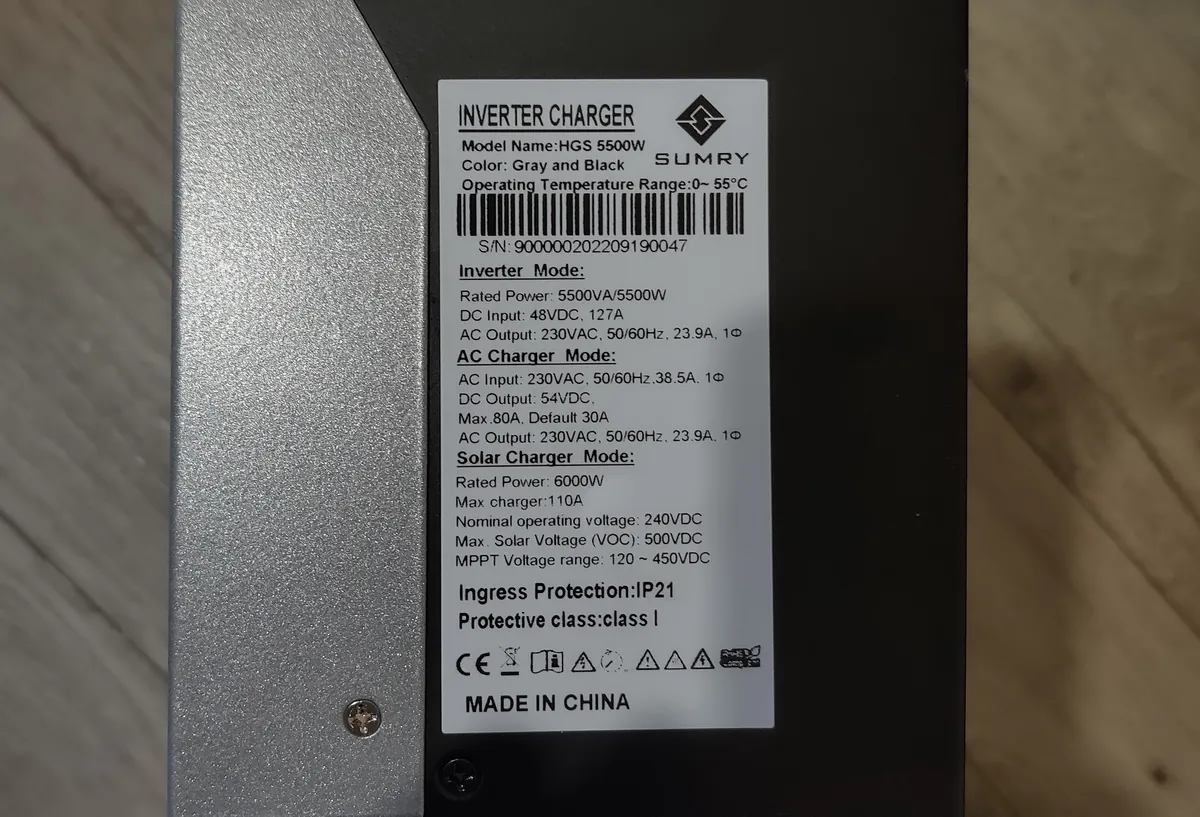
Features
- Pure sine wave
- Output power factor of 1.0
- Programmable power priority for PV, battery or grid
- User adjustable charge current and voltage
- Wide PV input range (120Vdc -500Vdc), 110A MPPT SCC
- Works without battery on a sunny day
- Wi-Fi monitoring function (optional)
- Anti-dusk kit for harsh environments (optional)
- LCD remote control with 5/10/20 meter wire (optional)
- PV and grid complement each other
- Use with lithium batteries.
A significant advantage of the Sumry standalone inverter is its capability to serve as an emergency power source. In the event of a power outage, it promptly initiates powering the entire network, ensuring uninterrupted operation.
Read also:
- Review and impressions of the COUGAR VANTAR AX gaming keyboard
- Be quiet! Shadow Base 800 DX Computer Case Review
The HGS 5500W inverter produces a clean sine wave at its output, the type that was in high demand this winter. The output power factor is equal to 1. You can manually set the charge current and voltage by adjusting the necessary parameters for the battery. This specified inverter can serve as a power source for all types of electrical devices in both your home and office. Its uninterrupted operation time will be limited only by the capacity of your batteries and the load you connect to the inverter.
Exterior and connectors
The inverter is designed to be mounted on a flat vertical wall.
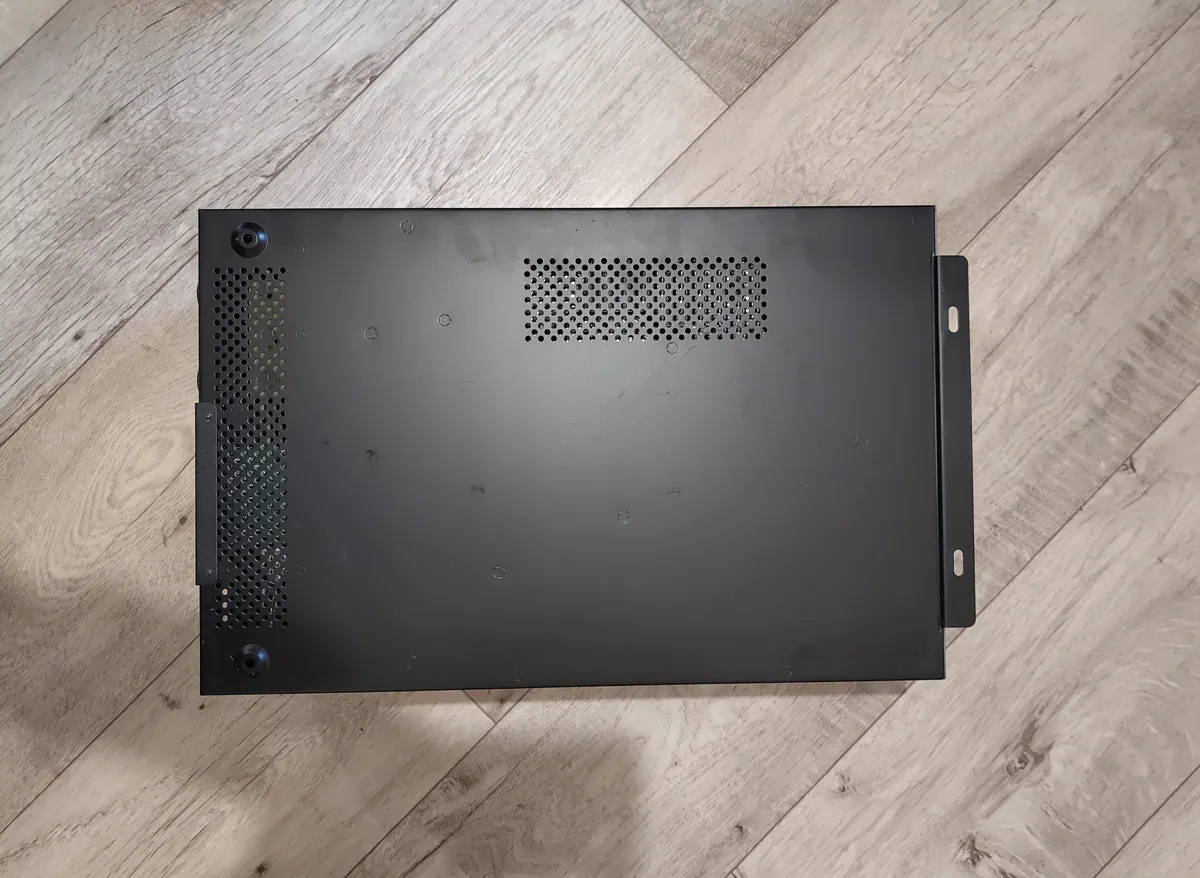 On the front panel of the device, there is an LCD display, at the bottom of which are indicators for status, charging, and faults.
On the front panel of the device, there is an LCD display, at the bottom of which are indicators for status, charging, and faults.
At the bottom of the inverter, there is a removable panel secured by two screws with a cross-shaped slot. By removing this panel, you will gain access to the communication ports. Each of them is labeled, and with a standard screwdriver, you can connect wires to the input-output points and establish the connection of the inverter to the overall electrical network.
The output of alternating current allows you to connect the home power station to the household network in the event of a power outage. Additionally, the inverter features a socket for connecting solar panels, enabling the supply of direct current in the range of 120-500 V. Moreover, there are two terminals for connecting rechargeable batteries. In the lower right part, a crucial button is situated, responsible for manually activating the inverter.
Wi-Fi module
Near the power button, there is a communication port RS485/RS232, which allows you to connect a special Wi-Fi module to the inverter. Through this module, you can monitor the status of your small power station. To do this, you will need to install a specialized program.
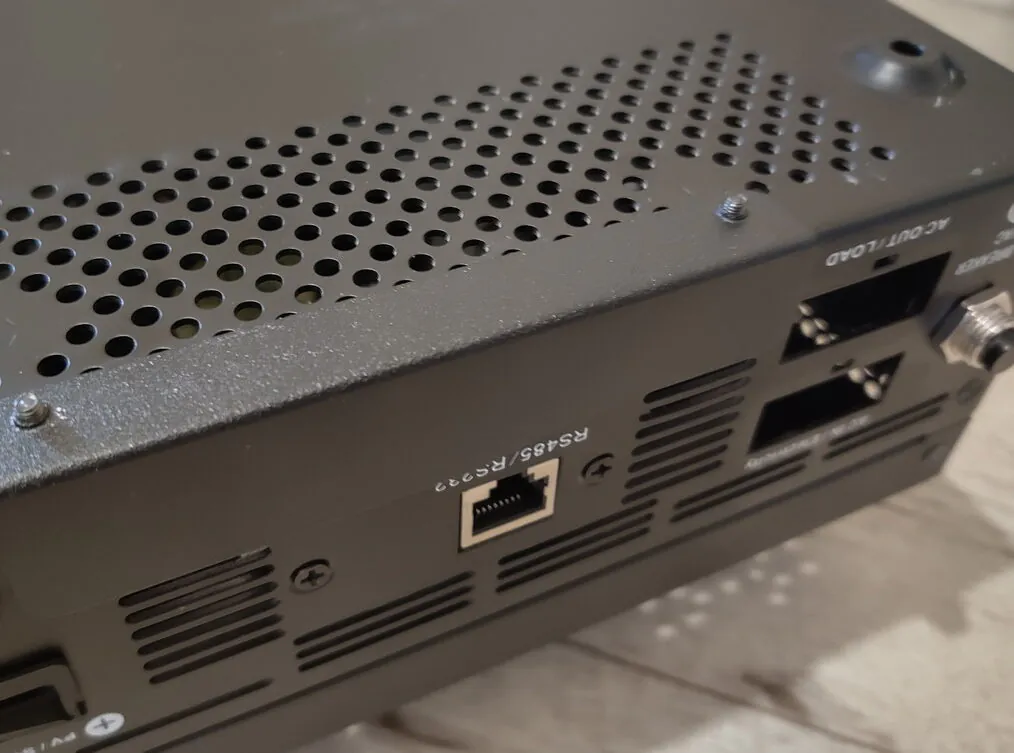
Included with the Wi-Fi module is the block itself, an antenna, communication cable, and instructions. On the module, there are four LEDs that indicate the operational status:
- The first, labeled PWR, indicates the presence of power
- Below it is COM, signaling the connection to the inverter
- The last two LEDs, labeled NET and SRV, are responsible for connecting to the internet and the server. These two will only light up after you have configured the internet on the Wi-Fi module itself.
To assist you in this process, a manual is provided in the kit, featuring a QR code. By scanning the code, you will receive a link to the application – it needs to be installed on your smartphone.
And then, following the instructions, create an account. The most crucial aspect during account creation is to note down the account name and password because, in practice, it has proven difficult (in this specific application) to recover this information. Let’s go through the initial setup of the program:
1. Before creating the account, upon opening the program for the first time, you need to go to the Wi-Fi Configuration link, then System connection, where you select the access point generated by the module itself.
2. On the main page of the program, information about a successful connection will be displayed. After that, you need to enter the network settings (Network Setting), where you input the data of your home router to which the module will connect directly (ATTENTION! Only a 2.4 GHz network).
3. After entering the data, press the Setting button, and the router should connect immediately.
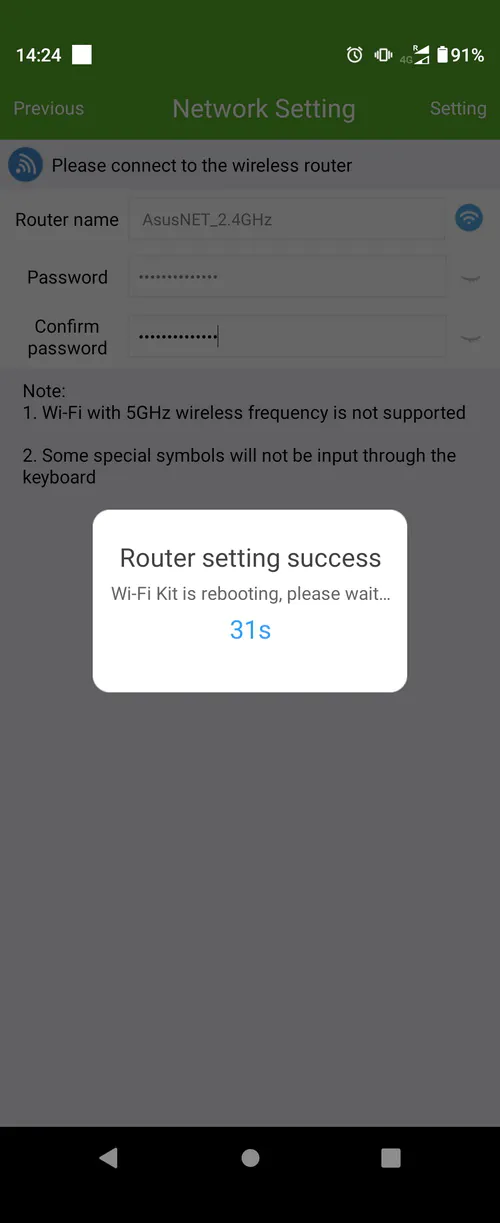
4. After this, the device will reboot, and you can access the “Diagnostics” section, where you will see successful connections to all sections of the chain – router, network, and server.
5. Connecting to the server may take some time (up to a few hours). After that, you will need to return to the main menu page, where you press the registration button Register.
6. Manually enter the number from the Wi-Fi module or scan it using the QR code on the body.
7. Next, fill in all the specified fields – username, password, email address (yours), and phone number. The last two lines are necessary for password recovery. However, as mentioned earlier, it’s still better to note it down somewhere.
Sometime after writing the review, the application underwent significant updates, so I’m not certain if the steps mentioned above will be in the same number and sequence. However, you should be able to manage.
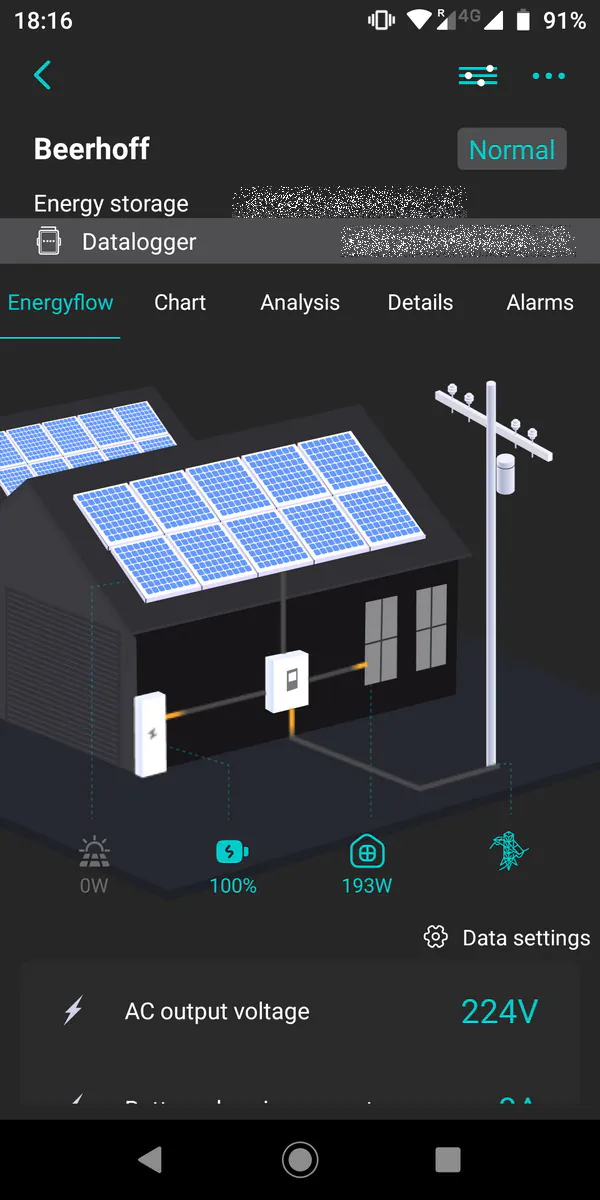
Read also:
- Samsung Galaxy SmartTag2 Tracker Review
- ASUS ROG Raikiri and ROG Raikiri Pro: Review and comparison of gamepads
Installing and connecting the inverter
Before starting to work with the inverter and rechargeable batteries, you will need to determine the location for their placement. Installing the inverter involves mounting it on a level, sturdy, preferably concrete, vertical wall. The room where this electrical equipment will be located should be dry, and the temperature should fluctuate between 0 to 55°C.
When choosing a location for the inverter, remember that there should be sufficient free space around it (from 20 to 50 cm) for heat dissipation. For convenience, place the inverter so that the screen is at eye level.
Once the inverter is hung, you can proceed with the installation of wires, connecting them to the internal building electrical network, and connecting the rechargeable batteries.
As mentioned earlier, the Sumry inverter belongs to the category of standalone inverters. It serves not only as a converter from direct current to alternating current but also functions as a relay switch from the main power grid to the backup source. The standalone type of inverter does not feed electricity back into the external network, and therefore, it does not provide the opportunity to earn money by selling electricity at green tariffs.
If you have solar panels, it is also necessary to install them on the roof or another level surface following the instructions, with the wires led to the location of the inverter.
IMPORTANT: Try to position the inverter and battery as close as possible to the location of the solar panels because the cost of the cables used to connect the panels to the inverter significantly increases in proportion to their length.
Once the installation is complete, proceed to use your inverter. It is advisable for all installation procedures to be carried out by professional electricians to avoid later concerns about burnt electrical equipment or fingers charred up to the elbow.
A bit about solar panels
When purchasing the Sumry HGS 5500W inverter, it is recommended to also consider acquiring solar panels. Integrating them into your small ecosystem will truly enable energy savings. Speaking of savings, the government is already considering increasing electricity tariffs to rebuild infrastructure after attacks by Russians. Therefore, buying solar panels would be a good investment in the future.
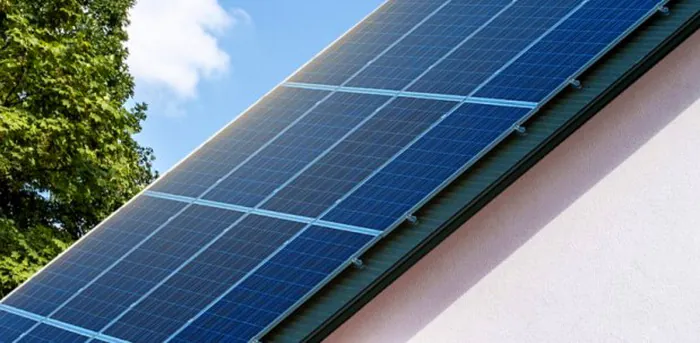
As of today, there are two types of solar panels: polycrystalline and monocrystalline. The first type has an efficiency of 13-17%, while the second type already boasts 18-22% efficiency. This is because monocrystalline panels are made from highly purified silicon.
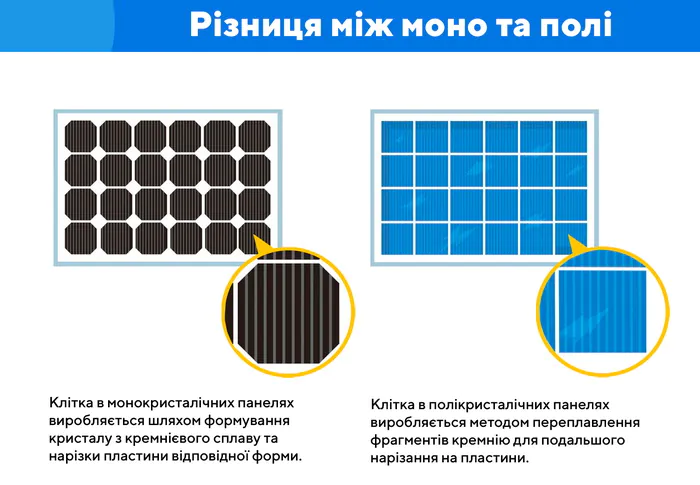
Let’s not forget that solar panels operate, surprisingly, from sunlight. Therefore, energy production ceases at night, and on cloudy days, it significantly decreases. Hence, it is crucial to choose the right power capacity for the panels so that the batteries have the opportunity to recharge during daylight hours.
Sunjetpower 100AH51B battery
Now let’s turn our attention to the rechargeable battery that came for review as part of the inverter kit.
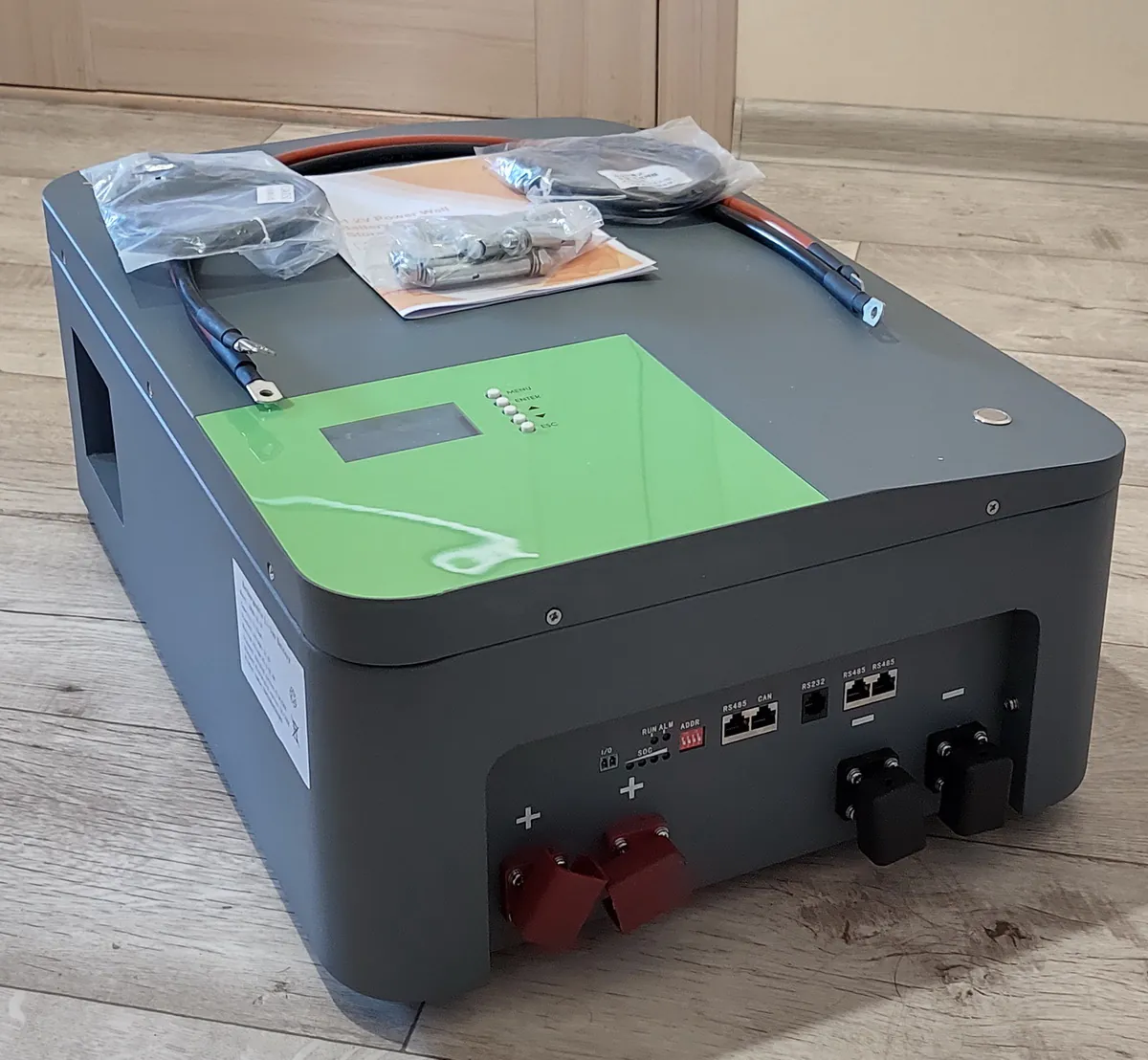
A quite powerful (and also heavy at 53.5 kg) lithium LiFePO4 battery has a long service life under proper operation. Like the inverter, the battery is designed to be vertically mounted on the wall. Considering its weight, it is advisable to place it at least on a brick wall and preferably on a concrete one to prevent the battery from unexpectedly ending up on the floor with its mountings and part of the wall in a not-so-“beautiful” moment.
Technical characteristics:
| Model | 100AH 51.2V | |
| Capacity | 5.12 kWh | |
| Standard discharge current | 50 А | |
| Maximum discharge current | 100 А | |
| Operating voltage | 43.2-57.6 V DC | |
| Rated voltage | 51.2 V DC | |
| Maximum charge current | 50 А | |
| Maximum charge voltage | 57,6 В | |
| DOD | 90% | |
| Humidity | 20-60% | |
| Installation | Wall mounting | |
| IP rating | IP20 | |
| Maximum number of devices connected in parallel | 16 | |
| Warranty | 5 years | |
| Communication interfaces | CAN/RS485/RS232 ( Wi-Fi / Bluetooth /4G optional) | |
| Device size | 558×400×228 mm | |
| Package size | 680×525×375 mm | |
| Net weight | 45 kg | |
| Gross weight | 53.5 kg | |
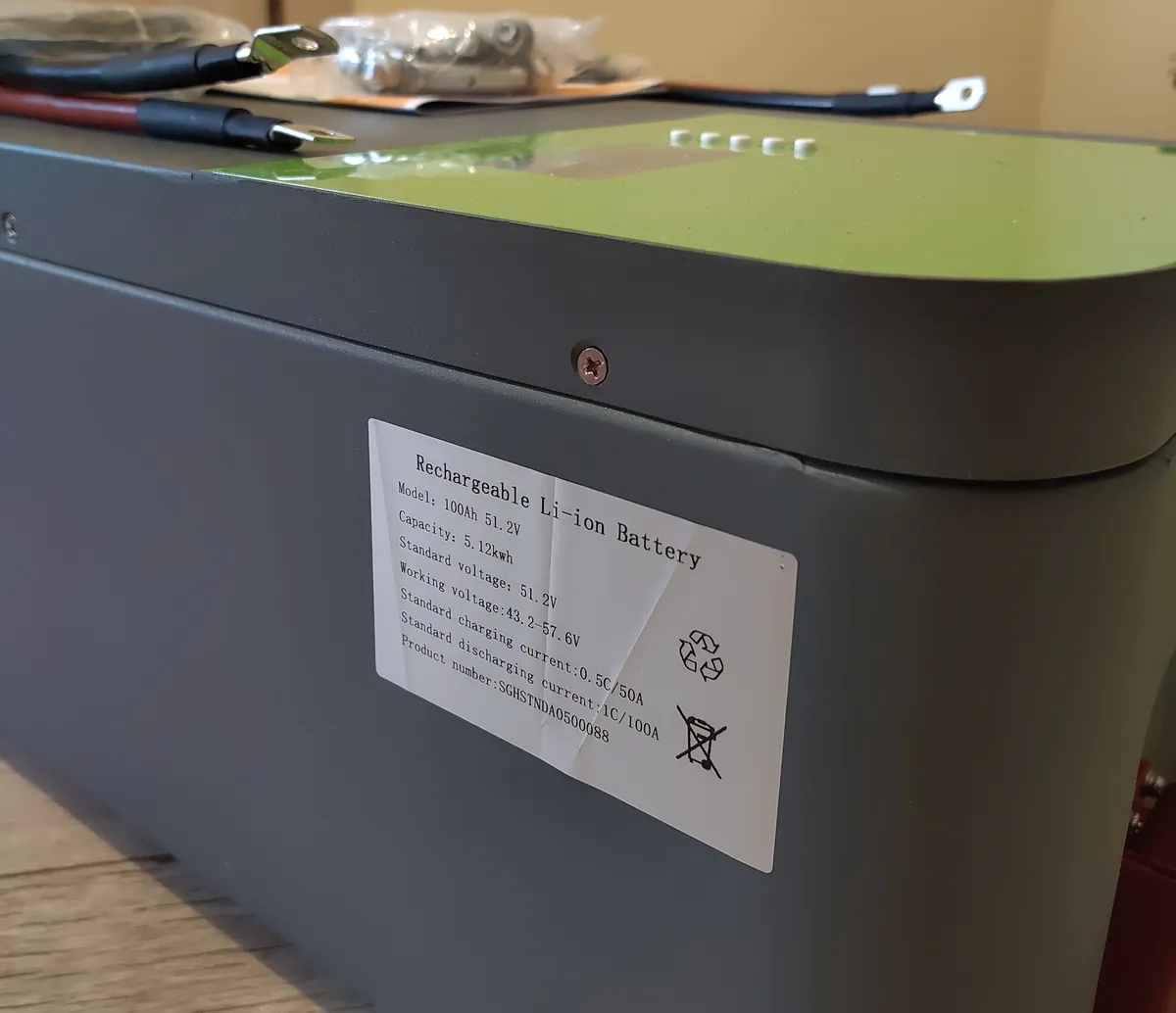
The battery has a capacity of 100 Ah. What does this mean for you? For example, if you took a similar kit to keep your home warm and you have a double-circuit boiler with a capacity of about 120 W, then the time until your battery is completely discharged will be about 40 hours. If you still need to keep the refrigerator, lighting, router and other minor consumers running, this is an additional 200 watts. And now your battery will last only 15 hours. And here you should think about increasing the storage capacity by buying additional batteries. Their design allows you to create cells from similar batteries.
Read also:
Therefore, with capacity limitations, you will have to impose restrictions on energy consumption based on priorities.
Thanks to the ability to set the charging current, you can use not only lithium but also other types of batteries. However, it is advisable to choose either gel or AGM batteries, as they do not release harmful or explosive substances during charging. If you are using a regular lead-acid serviceable battery, remember that its charging should only be done in a well-ventilated room or outdoors.
Another consideration when using car batteries is that you can discharge them at most by 70%, meaning from a 100 Ah battery, you can only draw 70 Ah. This is essential to remember during calculations. If you allow a complete discharge of a car battery (voltage drop to 10 V), you will reduce its service life – the battery will endure no more than 50 such cycles. If you allow a deep discharge of the battery, where the voltage drops to 0-1 V, you will shorten its life to 5 cycles. Lithium batteries do not have this drawback, although they also do not favor deep discharge. Additionally, remember that a complete discharge also reduces the capacity of the battery.
The Sunjetpower 100AH 51V boasts approximately 6500 charge-discharge cycles, aiming to provide around 10 years of service according to the manufacturer. Inside the battery, a modern control and monitoring unit has been integrated. Thanks to this unit, you can obtain information about voltage, current, and temperature, as well as the balance of cell charging/discharging speeds.
The battery has terminals for parallel connection with other batteries and connection terminals for the inverter. When connecting additional batteries, make sure to set the correct code on the code switches located at the bottom. You can find the correct configuration in the user manual.
At the bottom of the battery, there are communication ports that allow you to connect the battery to a monitoring device. Additionally, there is LED indication signaling the current power consumption and the operational status of the battery.
Conclusions and impressions from six months of operation
Overall, having tested the Sumry HGS 5500W inverter paired with the Sunjetpower 100AH 51V battery, I can confidently say that it’s a quite good solution for creating a home backup power source. Since the article was published in 2023, I decided that peace and warmth at home for me and my children are more important than any amount of money. Therefore, I’ve been using a similar setup for about half a year now. I slightly updated the review, added some fresh photos, and shared my impressions from long-term usage.
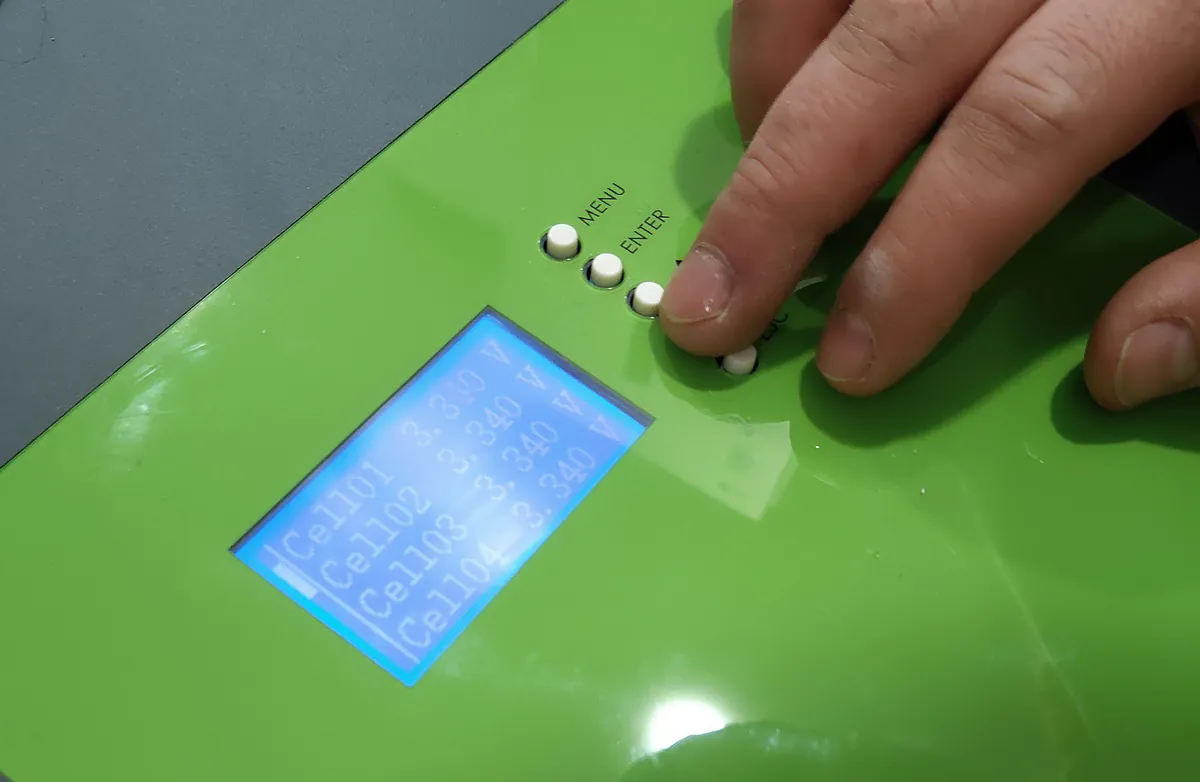
Several times since the beginning of winter, the Sumry HGS 5500W inverter with the Sunjetpower 100AH 51V battery has proven useful to me. On one occasion, there was a power outage for approximately 7 hours, and during this entire time, everything in the house that typically runs on the external grid was operational. We even turned on an induction cooker, an electric kettle, and a microwave, just to make sure it could handle it. And it could have worked for as much time again because, with a consumption rate of around 300-330 Wh (including a boiler, computer with a large monitor, wife’s laptop, refrigerator, router, and lighting), such a battery would easily last for 15-16 hours. Agree, just the thought of it is reassuring. If later on, I manage to purchase and install several solar panels, there will be additional savings from charging the battery with solar energy.
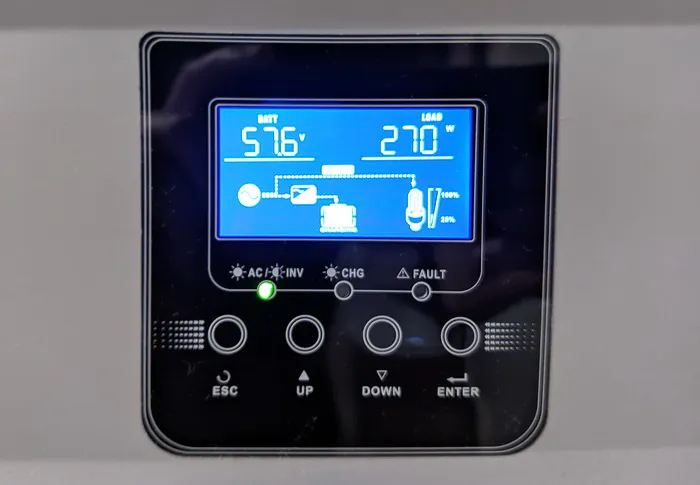
The kit is definitely worth the money spent on it (which, granted, is not insignificant). It’s not just about saving on electricity bills (as you would need solar panels for that), but it’s about the confidence that your living space will be somewhat autonomous, especially when it gets cold again. And if you decide to invest in solar panels, then you can indeed make significant savings on your electricity bills.
Where to buy
Sumry HGS 5500W
Sunjetpower 100AH 51В
Read alsо:
- ASUS ROG Zephyrus G14 (2023) Review: Real Beast
- ASUS TUF GAMING LC II 360 ARGB Water Cooling Review
- Samsung Galaxy Flip5 vs Motorola Razr 40 Ultra: Battle of two yokozunas



